Welcome to our exploration of the Agender Flag, a symbol that emerged in 2014, designed to celebrate and affirm the identities of individuals who identify as agender or gender-neutral. Much like the Omnisexual Flag, the Agender Flag is a powerful emblem that goes beyond its aesthetic appeal. In this examination, we will delve into the layers of significance embedded in each color, exploring the historical roots and appreciating the role of the Agender Flag in promoting inclusivity and understanding within the diverse landscape of gender identities. Join us on this journey as we unravel the unique and vibrant tapestry that is the Agender Flag.
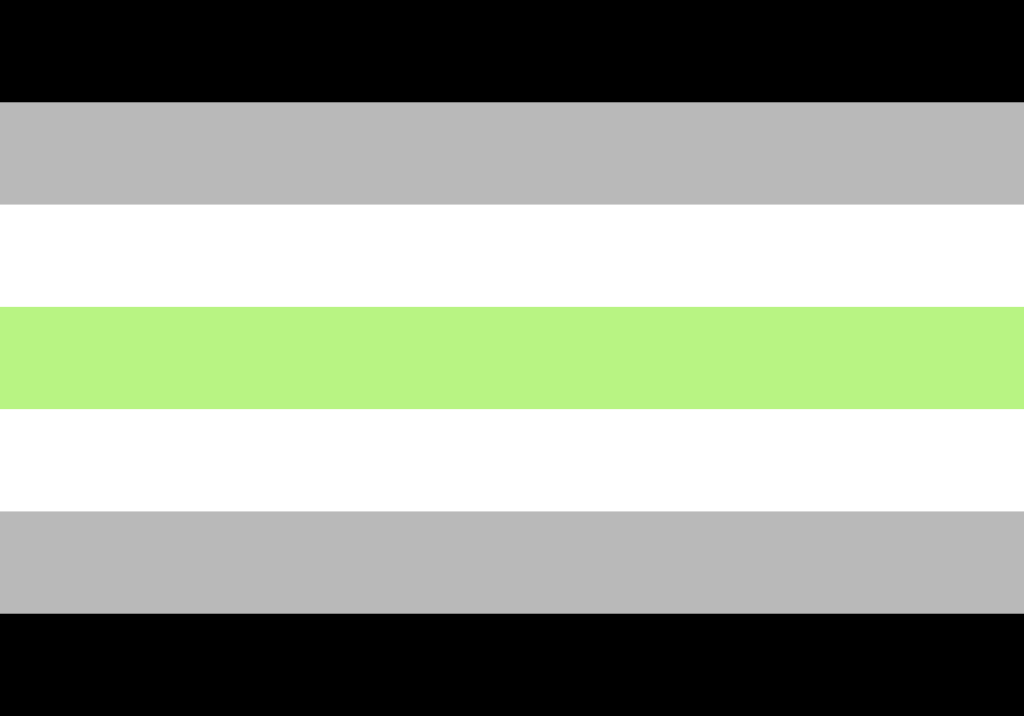
Download the Agender Flag as a HR PNG or SVG.
Meaning and Symbolism
The Agender Flag is more than just a burst of colors; it’s a powerful symbol that speaks volumes about identity and acceptance. Designed with thoughtful intention, the flag reflects the experiences and feelings of those who identify as agender. Let’s dive into the Meaning and Symbolism of the Agender Flag.
Firstly, the colors of the flag are not randomly chosen; each hue holds a specific meaning. The flag consists of four horizontal stripes – black, gray, white, and green. Black represents the complete absence of gender, conveying a sense of being agender or genderless. Gray signifies semi-genderlessness, acknowledging identities that are partially outside the traditional gender binary. The central white stripe represents gender neutrality, symbolizing those who identify as having a gender but feel disconnected from the expectations tied to it. Lastly, the vibrant green stripe signifies nonbinary genders, embracing the diversity within the agender community.
The arrangement of these colors also holds significance. The gradient from black to white to green reflects a journey of self-discovery and acceptance. It’s a visual representation of the different facets of gender identity, showcasing the fluidity and complexity that many individuals experience.
Importantly, the Agender Flag serves as a beacon of visibility and solidarity. By proudly displaying these colors, individuals express not only their own identity but also create a sense of community and understanding. In a world where gender norms often dictate how we perceive ourselves and others, the Agender Flag stands as a reminder that there are various ways to experience and express gender.
Furthermore, the simplicity of the flag’s design adds to its accessibility and inclusivity. Anyone, regardless of their artistic abilities, can recognize and replicate the flag, fostering a sense of unity among agender individuals and allies alike.

History of the Agender Flag
The Agender Flag, a symbol of identity and acceptance for those who identify as agender, has a history rooted in the LGBTQ+ community’s ongoing journey toward visibility and recognition. Designed by Salem X in 2014, this flag emerged as a response to the need for a specific symbol that represented the agender community’s unique experiences.
Salem X, an artist and activist, carefully chose the colors and design elements to encapsulate the diverse range of gender identities falling under the agender umbrella. The flag consists of four horizontal stripes – black, gray, white, and green – each carrying its own significance. Black represents a complete absence of gender, gray signifies partial genderlessness, white represents gender neutrality, and green stands for nonbinary genders.
The creation of the Agender Flag was a deliberate effort to provide visibility to those who identify as agender, a term describing individuals who don’t feel a connection to any gender or who identify as gender-neutral. As with many flags within the LGBTQ+ spectrum, the Agender Flag serves not only as a personal symbol but also as a tool for fostering a sense of community and understanding.
Since its inception, the Agender Flag has gained recognition and acceptance within the LGBTQ+ community and beyond. Its simple yet meaningful design has made it accessible and easily recognizable, contributing to its widespread adoption as a powerful symbol of agender identity.
The history of the Agender Flag reflects the broader movement toward inclusivity and acknowledgment of diverse gender identities. As conversations around gender continue to evolve, symbols like the Agender Flag play a crucial role in fostering understanding, solidarity, and acceptance for individuals who identify outside the traditional gender binary.
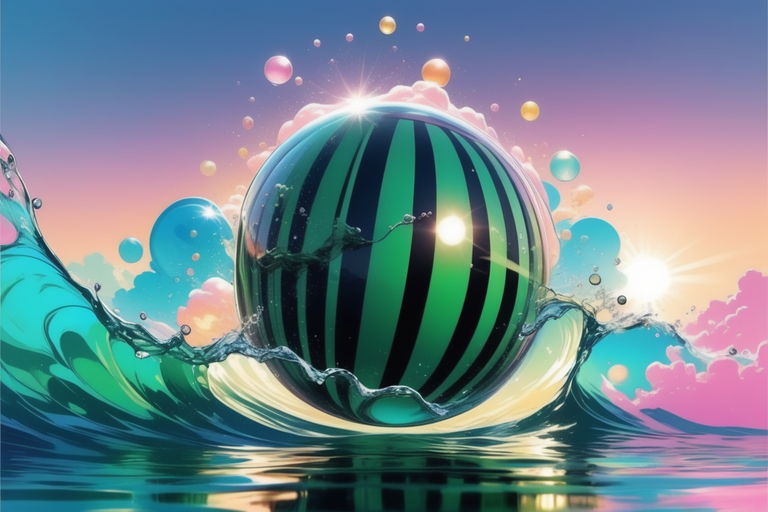
Colors and Their Representation
The Agender Flag is a vibrant tapestry of colors, each carefully chosen to convey specific meanings and representations. Let’s delve into the significance of each color and the rich symbolism they bring to the agender community.
1. Black: At the top of the flag, the black stripe signifies a complete absence of gender. This color represents individuals who identify as agender or genderless, emphasizing a lack of connection to any specific gender identity.
2. Gray: Following black, the gray stripe represents semi-genderlessness. This shade acknowledges identities that exist partially outside the traditional gender binary, reflecting the nuanced experiences of those who don’t fully align with conventional gender norms.
3. White: Positioned at the center, the white stripe embodies gender neutrality. This color symbolizes individuals who may have a gender but feel disconnected from societal expectations tied to it. It’s a visual representation of a space where gender norms hold less sway.
4. Green: Finally, the bottom stripe in a vibrant green hue signifies nonbinary genders. This color celebrates the diversity within the agender community, acknowledging and embracing identities that fall outside the binary concept of gender.
The Gradient Effect: The arrangement of these colors in a gradient from black to white to green creates a visual journey. This gradient reflects the process of self-discovery and acceptance that many individuals within the agender community undergo. It showcases the fluidity and complexity of gender identity, illustrating that the journey is not linear but rather a spectrum of experiences.
The Agender Flag’s colors collectively create a powerful and inclusive symbol. By combining simplicity with deep meaning, the flag effectively communicates the diverse spectrum of identities within the agender community. As we celebrate these colors, we honor the individuals who use this flag to express their authentic selves and contribute to a more inclusive understanding of gender.
Scroll down to find the color codes for each color.

What are the RAL or Pantone colors of the Agender flag?
The Agender Flag doesn’t have official Pantone or RAL specifications, the following approximations can be used:

BLACK
Pantone: Black C
RAL: 9005
HEX: #000000

GRAY
Pantone: Pantone Cool Gray 5 C
RAL: 7035
HEX: #bababa

WHITE
Pantone: White
RAL: 9010
HEX: #ffffff

GREEN
Pantone: 376 C
RAL: 6018
HEX: #b9f583
Kindly be aware that the colors mentioned here are approximations, and the exact shades may vary based on factors such as the production method, material, and lighting conditions. For accurate color representation, it is advisable to utilize physical color samples or seek guidance from a professional color matching service.
Usage and Recognition
Since its creation in 2014, the Agender Flag has gained notable recognition and has become a widely embraced symbol within the LGBTQ+ community. Its usage extends beyond personal expression, serving as a powerful tool for visibility, awareness, and fostering a sense of community.
1. Personal Expression: Individuals identifying as agender or gender-neutral proudly use the Agender Flag as a means of personal expression. Whether displayed at events, on social media profiles, or in everyday life, the flag allows individuals to communicate their gender identity authentically and without the need for words.
2. LGBTQ+ Events: The Agender Flag is a common sight at LGBTQ+ events and gatherings worldwide. Its presence alongside other pride flags underscores the importance of recognizing and celebrating the diverse spectrum of gender identities within the broader LGBTQ+ community.
3. Online Platforms: Social media platforms and online communities have played a significant role in popularizing the Agender Flag. Users often incorporate the flag into their profiles, creating a digital space for agender individuals to connect, share experiences, and find support.
4. Inclusive Spaces: The Agender Flag has become a symbol of inclusivity and acceptance. Organizations, businesses, and educational institutions striving to create welcoming environments for all genders may display the flag as a visual statement of their commitment to diversity and understanding.
5. Educational Initiatives: As conversations around gender diversity continue to evolve, the Agender Flag is increasingly featured in educational initiatives. Its inclusion in discussions about gender identity helps raise awareness and promotes a more nuanced understanding of the diverse ways individuals experience and express their gender.
6. Merchandise and Art: The design’s simplicity and meaningful symbolism make the Agender Flag popular for merchandise and artistic expressions. From clothing and accessories to artworks and tattoos, the flag has transcended its initial purpose, becoming a versatile symbol of identity and unity.
The recognition and usage of the Agender Flag highlight its importance in the ongoing conversations about gender inclusivity. As more individuals and communities embrace this symbol, it contributes to a broader cultural shift toward acknowledging and respecting the diverse ways people experience and express their gender.
Related Flags and Symbols

Rainbow Flag: The universally recognized LGBTQ+ Pride flag, featuring a spectrum of colors, designed by Gilbert Baker.

Transgender Pride Flag: Designed by transgender activist and Navy veteran Monica Helms, it consists of light blue, pink, and white stripes, representing the transgender community.
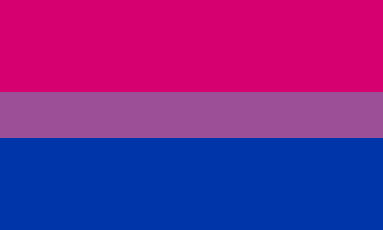
Bisexual Pride Flag: Created by Michael Page, it features three horizontal stripes—pink, purple, and blue—symbolizing attraction to more than one gender.

Pansexual Pride Flag: Designed by various activists, it consists of three horizontal stripes—pink, yellow, and blue—representing attraction regardless of gender.

Non-Binary Pride Flag: Created by Kye Rowan, it features yellow, white, purple, and black stripes, symbolizing genders outside the traditional binary.

Genderqueer Pride Flag: Designed by Marilyn Roxie, it features lavender, white, and dark green stripes, representing genderqueer, non-binary, and genderfluid identities.
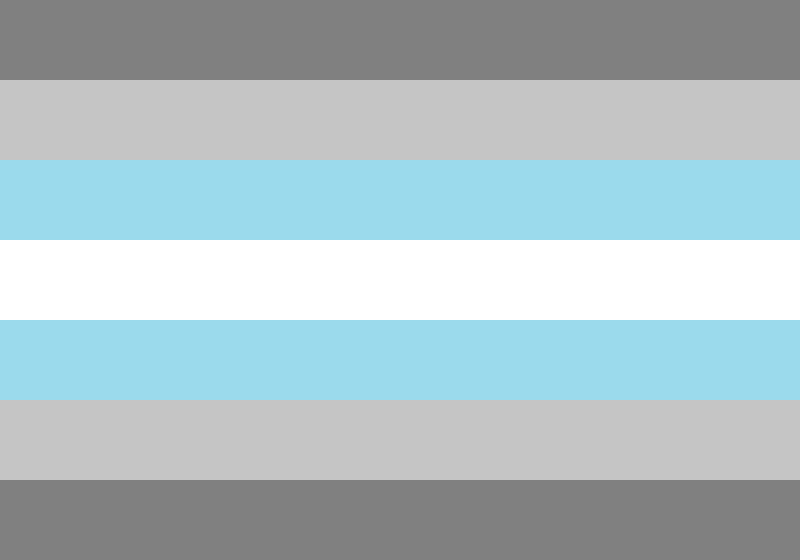
Demiboy Pride Flag: Designed by an anonymous Tumblr user, it consists of light blue, white, and black stripes, representing a partial connection to being male.

Demigirl Pride Flag: Also designed by an anonymous Tumblr user, it features light pink, white, and black stripes, representing a partial connection to being female.
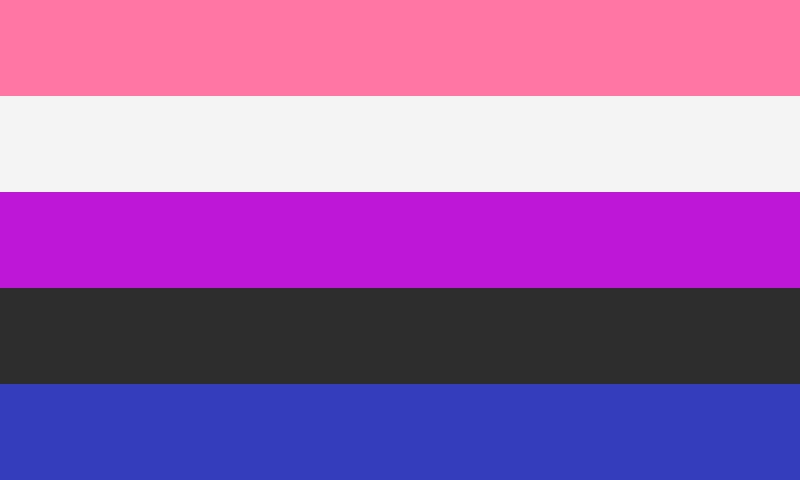
The Genderfluid Flag: designed in 2012 by activist JJ Poole, is a vibrant emblem symbolizing the diverse spectrum of gender identities, with each carefully chosen color representing different facets of the genderfluid experience.

The Omnisexual Flag: Omnisexuality involves attraction to all genders, with preferences varying. Created in 2015, the Omnisexual Pride Flag represents the gender spectrum with light pink and blue for femininity and masculinity, and dark purple for those outside traditional categories..
Community Acceptance and Adoption
The Agender Flag has experienced widespread acceptance and adoption within the agender and broader LGBTQ+ communities, fostering a sense of unity, visibility, and understanding. The flag’s journey from its creation to becoming a recognized symbol reflects the positive strides made in acknowledging and accepting diverse gender identities.
1. Community Pride: The agender community has embraced the Agender Flag as a source of pride and empowerment. The flag serves as a unifying symbol, providing a visual representation of shared experiences and identities. Its adoption within the community has contributed to a collective sense of visibility and belonging.
2. Symbol of Inclusivity: The Agender Flag has become a symbol of inclusivity within the larger LGBTQ+ community. Its distinctive design and meaningful colors contribute to a more comprehensive representation of gender identities, promoting a culture of acceptance and respect for diverse gender expressions.
3. Ally Support: Allies of the agender community have also played a crucial role in the widespread acceptance of the Agender Flag. The flag’s simplicity and clear symbolism make it accessible to individuals outside the community, fostering allyship and understanding.
4. Cultural Shift: The adoption of the Agender Flag signifies a broader cultural shift towards recognizing and respecting diverse gender identities. As discussions around gender evolve, the flag has become an essential tool for educating the public about the experiences of agender individuals and promoting a more inclusive understanding of gender.
5. Representation in Media: The Agender Flag has begun to find representation in various forms of media, further contributing to its acceptance. From television shows and movies to literature and art, the flag’s presence in mainstream and niche media helps normalize and validate agender identities.
6. Educational Initiatives: Educational institutions and awareness campaigns often incorporate the Agender Flag to promote understanding and inclusivity. The flag serves as a visual aid in discussions about gender diversity, encouraging open dialogue and challenging traditional notions of gender.

What does it mean to be Agender?
Being agender means identifying as a person without a specific gender or feeling a lack of connection to any traditional gender categories. Agender individuals may not experience a sense of gender or may reject societal expectations associated with gender. The term “agender” falls under the nonbinary umbrella, which encompasses a range of gender identities that don’t fit within the conventional binary of male or female.
For agender individuals, the experience of gender is often characterized by a feeling of neutrality or absence rather than alignment with a specific gender identity. It’s important to note that the way people understand and express their gender is deeply personal and can vary widely among individuals.
Agender individuals may choose different ways to express their gender identity, from using gender-neutral pronouns (like “they/them”) to adopting a gender-neutral appearance or presentation. The agender identity reflects a diverse range of experiences and is an integral part of the broader conversation around gender diversity and acceptance within society. Understanding and respecting an individual’s self-identified gender, including being agender, is crucial for promoting inclusivity and affirming the validity of diverse gender experiences.

What are the different types of Agender people?
While the term “agender” generally refers to individuals who don’t identify with any specific gender or feel a lack of gender altogether, it’s important to recognize the diversity within the agender umbrella. People who identify as agender may have varied experiences and expressions of their gender identity. Here are some ways individuals might describe their agender identity:
- Totally Agender: Some individuals identify as completely agender, meaning they experience a complete absence of gender or a lack of connection to any gender identity.
- Semi-Agender or Demi-Agender: Others may describe themselves as semi-agender or demi-agender, indicating that they feel partially or intermittently disconnected from gender. This could mean experiencing moments or aspects of gender neutrality.
- Gender-Neutral: Some agender individuals may prefer to describe themselves as gender-neutral, indicating a lack of alignment with traditional gender categories but not necessarily a complete absence of gender feelings.
- Fluid or Flux Agender: Like many gender identities, agender can be fluid for some individuals. They may experience fluctuations in their sense of gender over time, feeling more or less connected to gender at different points.
- Bigender or Multigender: While less common, some individuals may identify as both agender and another gender simultaneously (bigender) or as multiple genders (multigender). This reflects the diversity within the nonbinary spectrum.
It’s crucial to remember that these descriptions are not exhaustive, and individuals may use different terms to express their unique experiences of being agender. Additionally, language and understanding of gender identities are continually evolving, and people may adopt new terms or refine existing ones to better articulate their identities. Respecting individuals’ self-identified terms and expressions is key to fostering a supportive and inclusive environment for people of all gender identities, including those who identify as agender.

Inclusivity and Representation
Inclusivity and representation play pivotal roles in fostering understanding and acceptance of diverse gender identities, including agender experiences. As societal awareness grows, there is a growing recognition of the importance of creating inclusive spaces that validate the identities of agender individuals. Here’s a closer look at how inclusivity and representation contribute to a more supportive environment:
1. Breaking Binary Norms: Inclusive representation challenges traditional binary norms by acknowledging and celebrating gender identities outside the male-female dichotomy. By recognizing agender identities, society moves towards a more nuanced understanding of gender, promoting inclusivity for individuals who don’t fit within established categories.
2. Visibility Matters: Inclusivity ensures that agender individuals see themselves reflected in various aspects of life, from media and education to everyday environments. Increased visibility helps combat feelings of isolation and fosters a sense of belonging, validating the experiences of those who identify as agender.
3. Language and Pronouns: An inclusive environment respects and accommodates diverse gender identities through the use of inclusive language and pronouns. Recognizing and using gender-neutral pronouns, such as “they/them,” contributes to creating spaces where agender individuals feel acknowledged and respected.
4. Representation in Media and Art: Inclusive representation in media, literature, and art is essential for shaping perceptions and understanding. When agender characters and narratives are authentically portrayed, it not only provides representation but also contributes to breaking down stereotypes and fostering empathy.
5. Education and Awareness: Inclusive education initiatives raise awareness about agender identities, promoting a better understanding of the diversity within the nonbinary spectrum. This education helps challenge preconceptions and encourages a more inclusive and supportive attitude towards agender individuals.
6. Workplace Inclusivity: Inclusive workplaces strive to create environments where agender individuals can express their gender identity without fear of discrimination. Policies that respect diverse gender expressions and inclusive practices contribute to a workplace culture that values and supports all employees.
7. Allyship: Inclusivity extends to allyship, where individuals actively support and advocate for agender rights and visibility. Allies play a crucial role in amplifying agender voices, challenging stigma, and contributing to a culture of acceptance.
Support and Resources
Support and resources are vital for individuals who identify as agender to navigate various aspects of life, find understanding communities, and access information that validates their experiences. Here are some avenues for support and resources for agender individuals:
1. LGBTQ+ Organizations:
- GLAAD: GLAAD is a media advocacy organization working to promote understanding and representation of the LGBTQ+ community. Their resources cover a range of topics, including nonbinary and agender identities.
- The Trevor Project: This organization provides crisis intervention and suicide prevention services for LGBTQ+ youth. They offer support through phone, chat, and text.
2. Online Communities:
- Reddit – Nonbinary and Agender Subreddits: Platforms like Reddit have supportive communities where individuals can share experiences and seek advice. Subreddits such as r/agender and r/nonbinary are spaces for discussions and mutual support.
3. Counseling and Mental Health Services:
- National Alliance on Mental Illness (NAMI) Helpline: NAMI provides mental health resources and helplines for individuals seeking support and information. They can offer guidance on finding mental health professionals who are knowledgeable about gender diversity.
4. Gender-Inclusive Health Clinics:
- Planned Parenthood: Planned Parenthood offers inclusive and affirming healthcare services. They have resources on gender-affirming care, including hormone therapy.
5. Educational Resources:
- PFLAG: PFLAG provides resources and support for families, friends, and allies of LGBTQ+ individuals. Their website includes information on gender identity and has local chapters that offer support.
6. Gender Identity Workshops and Events:
- Local LGBTQ+ Centers: Many LGBTQ+ community centers host workshops, support groups, and events that focus on gender identity. These spaces can provide valuable connections and resources.
7. Legal and Advocacy Resources:
- Lambda Legal: Lambda Legal is a legal advocacy organization working on behalf of LGBTQ+ individuals. They offer resources on legal issues and rights for gender-diverse individuals.
8. Literature and Reading Materials:
- Books and Literature: Reading materials that focus on agender experiences and gender diversity can provide valuable insights and a sense of validation. Libraries and online platforms often have extensive collections.
9. Workplace Resources:
- Human Rights Campaign (HRC) Workplace Resources: HRC provides resources for workplaces striving to create inclusive environments. This includes guidelines for gender-inclusive policies and practices.
These resources can serve as starting points for agender individuals seeking support and information. It’s essential to explore local organizations, community centers, and healthcare providers that are affirming and knowledgeable about gender diversity. Connecting with supportive communities and accessing reliable information can contribute to a more empowered and affirmed experience of being agender.
Where to buy a Agender flag?

Buy pride flags on Ebay
Ebay has a large collection of HQ and affordable Agender flags!
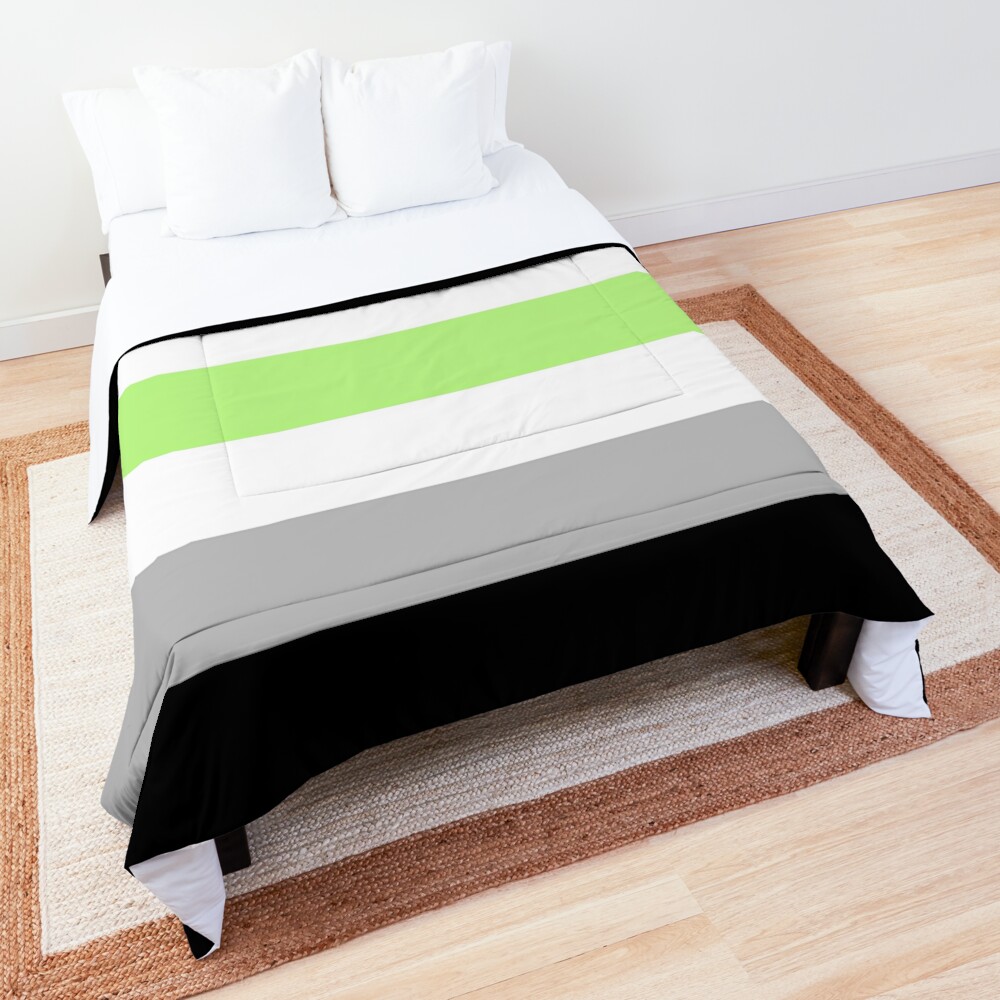
Buy products on Redbubble
Redbubble has a large collection of products with the Agender flag, such as pillows, phone cases, T-shirts, mugs, hats, and much more!
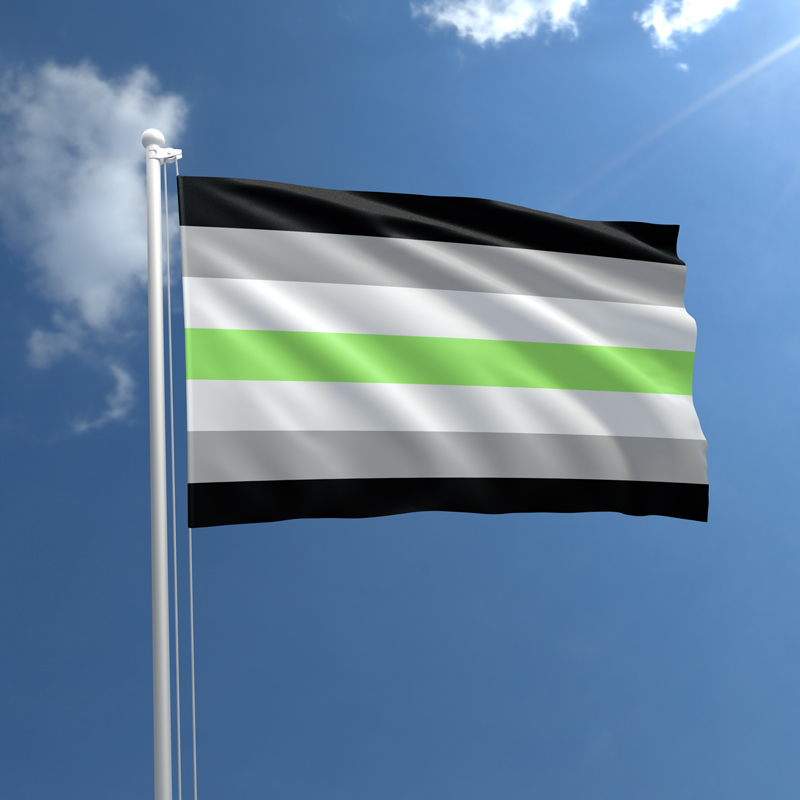
Buy from GrPride
GrPride offers a HQ 3′ x 5′ polyester Agender pride flag!

Download the Agender flag.
Download as (6800×4700 px) PNG or SVG.
Can I use the downloaded flag for my personal projects? Yes you can, this flag is in the public domain and you can use it whatever way you like.
How about commercial? The same, you can use it commercially and personally!
How to I know I am Agender?
Discovering and understanding one’s gender identity is a personal and often evolving process. If you’re questioning whether you might be agender, here are some considerations and reflections that may help you explore your feelings:
1. Reflect on Your Gender Feelings:
- Take time to reflect on your internal sense of gender. Do you feel a connection to a specific gender, or do you find yourself feeling detached from traditional gender categories?
- Consider how you experience and relate to your own body and the societal expectations tied to gender.
2. Explore Your Comfort with Gendered Terms:
- Reflect on how you feel about gendered terms like “he,” “she,” or other gendered descriptors. Do they feel comfortable, or do you find yourself more at ease with gender-neutral terms like “they”?
3. Assess Your Relationship with Gender Expression:
- Consider your feelings about gender expression. Do you feel a connection to traditionally masculine, feminine, or androgynous expressions, or do you prefer a more neutral presentation?
4. Seek Support and Information:
- Connect with supportive friends, family, or communities who are open to discussions about gender diversity. Sharing your thoughts with others and hearing about their experiences can be helpful.
- Explore resources online, such as articles, blogs, or forums where people discuss their journeys with gender identity.
5. Consider Pronoun Preferences:
- Reflect on your feelings about pronouns. Some agender individuals may prefer gender-neutral pronouns like “they/them” to better reflect their identity. Experimenting with different pronouns in a supportive environment can provide insights.
6. Consult with Mental Health Professionals:
- If you find the exploration challenging, consider consulting with mental health professionals, especially those experienced in gender identity issues. They can provide support and guidance in a safe and confidential setting.
7. Embrace Fluidity:
- Gender identity can be fluid, and it’s okay if your feelings evolve over time. Allow yourself the space to explore and embrace your identity as it unfolds.
8. Trust Your Feelings:
- Trust your feelings and experiences. Your understanding of your gender identity is uniquely yours, and there’s no right or wrong way to feel or express yourself.
Remember that self-discovery is a personal journey, and there’s no rush to label or define your identity. Take the time you need, and if the term “agender” resonates with you and helps you better understand and express your feelings about gender, that’s entirely valid. Additionally, identities can be fluid and may change over time, so it’s essential to be open to self-exploration and growth.
Recommended books
There are several books that explore and address the experiences of Agender individuals, offering insights, narratives, and perspectives that can be both validating and enlightening. Here are some recommendations:
- “Stone Butch Blues” by Leslie Feinberg
This novel is a classic in LGBTQ literature and follows the life of a gender-nonconforming protagonist, exploring themes of identity and resilience.
- “Nevada” by Imogen Binnie
This novel centers around a transgender protagonist and delves into themes of self-discovery, identity, and the challenges of navigating a genderqueer existence.
- “Gender Outlaws: The Next Generation” edited by Kate Bornstein and S. Bear Bergman
This anthology features diverse voices within the LGBTQ community, including essays and narratives that encompass a wide range of gender identities and expressions. - “Genderqueer: Voices Beyond the Sexual Binary” edited by Joan Nestle, Clare Howell, and Riki Wilchins
This collection brings together personal narratives, essays, and poems that explore the experiences of genderqueer individuals, providing a rich and varied perspective. - “They/Them/Their: A Guide to Nonbinary and Genderqueer Identities” by Eris Young
A comprehensive guide that explores nonbinary and genderqueer identities, offering insights and information for those seeking to understand or navigate these experiences. - “Trans Bodies, Trans Selves” edited by Laura Erickson-Schroth
This resource covers a wide range of topics related to transgender and gender-nonconforming experiences, offering practical information and personal narratives. - “The ABC’s of LGBT+” by Ashley Mardell
Geared towards a younger audience, this book provides an accessible and informative guide to various aspects of the LGBTQ+ spectrum, including Omnisexuality. - “Trans Like Me: Conversations for All of Us” by C.N. Lester
C.N. Lester, a nonbinary activist, explores the complexities of gender identity in this thought-provoking book, combining personal experiences with broader discussions about gender. - “The Art of Being Normal” by Lisa Williamson
A fictional narrative that follows the lives of two transgender teens, this novel provides a relatable and engaging story that can resonate with individuals exploring their own identities. - “Beyond Magenta: Transgender Teens Speak Out” by Susan Kuklin
This book shares the stories of transgender and genderqueer teens, providing a platform for their voices and experiences.
These books cover a range of genres and styles, offering Agender individuals and those seeking to understand more about gender diversity a diverse and enriching reading list. It’s essential to explore various perspectives to gain a more comprehensive understanding of the fluidity and diversity within gender identities.

Educational content and resources:
Explore the following collection of resources and websites tailored to provide valuable support and information for individuals navigating Agender identities. Whether you are seeking community connections, educational materials, or assistance in understanding and expressing your gender identity, these platforms have been curated to offer a diverse range of perspectives and resources.
- Nonbinary.org
- Offers a wealth of information on nonbinary and genderqueer identities.
- GLAAD’s Tips for Allies of Transgender People
- Provides guidance for allies of transgender and gender nonconforming individuals.
- Gender Diversity
- Offers resources and support for families and children exploring gender identity.
- National Center for Transgender Equality (NCTE)
- Advocacy organization working towards policy reform and transgender equality.
- The Trevor Project
- A crisis intervention and suicide prevention organization for LGBTQ+ youth.
- Transgender Equality
- Provides resources, policy advocacy, and educational materials.
- Genderqueer.me
- A resource hub with articles, stories, and information on genderqueer identities.
- Autostraddle’s “Queer Your Tech”
- A tech and culture column that often includes gender-related content.
- Trans Lifeline
- A crisis hotline and resource for transgender individuals.
- PFLAG
- Offers support and resources for LGBTQ+ individuals, their families, and allies.
- Gender Diversity: Beyond the Binary
- A TED Talk playlist featuring discussions on gender diversity.
- Human Rights Campaign (HRC)
- Advocacy and educational resources for LGBTQ+ rights.
- Queer Books for Teens
- A curated list of LGBTQ+ literature, including Agender themes.
- Transgender Map
- A comprehensive guide covering various aspects of transgender and genderqueer identities.
- The Gender Book
- An online resource and book providing information on gender diversity.
- MyPronouns.org
- Offers guidance on using and respecting personal pronouns.
- National LGBTQ Task Force
- Advocacy organization working towards justice and equality for LGBTQ+ individuals.
- The Agender Project
- A platform for sharing experiences and resources related to agender identities.
- The Queer Encyclopedia
- A comprehensive resource with entries on a wide range of LGBTQ+ topics.
- Astraea Lesbian Foundation for Justice
- A foundation supporting LGBTQ+ rights globally, including gender-related issues.
Conclusion

In summary, created in 2014, the Agender Flag is a vibrant symbol representing individuals who identify as agender or gender-neutral. Designed by Salem X, its four horizontal stripes convey specific meanings: black symbolizes a complete absence of gender, gray represents semi-genderlessness, white signifies gender neutrality, and green stands for nonbinary genders. The flag’s gradient design from black to green visually represents the journey of self-discovery and acceptance. Beyond its aesthetic appeal, the Agender Flag serves as a powerful emblem of visibility, community, and acceptance, affirming the diverse experiences of those navigating beyond traditional gender norms.

FAQs and Common Misconceptions
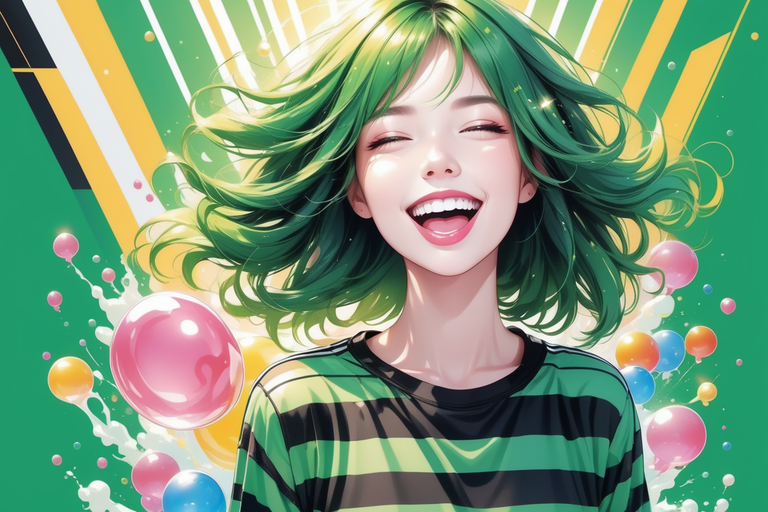
What does each color on the Agender Flag represent?
Each color on the Agender Flag holds specific meaning: black symbolizes a complete absence of gender, gray represents semi-genderlessness, white signifies gender neutrality, and green embodies nonbinary genders. The gradient design from black to green visually illustrates the journey of self-discovery and acceptance.
Who designed the Agender Flag, and when was it created?
The Agender Flag was designed by Salem X in 2014, marking its creation as a deliberate and thoughtful effort to provide visibility and representation for individuals who identify as agender or gender-neutral.
How is the Agender Flag used within the LGBTQ+ community?
The Agender Flag is widely used within the LGBTQ+ community as a symbol of identity and acceptance. It can be seen at LGBTQ+ events, displayed on social media profiles, and incorporated into various forms of art and merchandise.
Are there other related flags and symbols within the LGBTQ+ community?
Yes, there are several related flags and symbols within the LGBTQ+ community, each representing different gender identities and sexual orientations. Examples include the Nonbinary Pride Flag, Genderqueer Flag, and the Pansexual Pride Flag.
Can I create my own DIY version of the Agender Flag?
Absolutely! Creating your own DIY version of the Agender Flag is a wonderful way to personalize and express your identity. Be mindful of the colors’ meanings and ensure your design aligns with the intended symbolism.
What is an example of Agender?
An example of someone who is agender is an individual who doesn’t feel a connection to any specific gender and may identify as gender-neutral. Their experience of gender is characterized by a sense of neutrality or absence rather than aligning with traditional gender categories.
How has the Agender Flag contributed to community acceptance and adoption?
The Agender Flag has significantly contributed to community acceptance and adoption by serving as a unifying symbol for individuals who identify as agender. Its visibility at LGBTQ+ events, representation in media, and adoption by allies have fostered a sense of community and understanding.
How can the Agender Flag contribute to promoting equality and understanding?
The Agender Flag contributes to promoting equality and understanding by challenging traditional gender norms and emphasizing the diversity of gender experiences. It serves as a visual reminder of the importance of inclusivity and recognition for those navigating outside conventional gender categories.
Are there support networks and resources available for individuals exploring their gender identity?
Support networks and resources for individuals exploring their gender identity include LGBTQ+ organizations like GLAAD and The Trevor Project, online communities, counseling services, and gender-inclusive health clinics. Seeking guidance from these resources can provide valuable support during the self-discovery process.
What is the exact shade of blue in the Agender Flag?
The Agender Flag doesn’t include a shade of blue. Its colors are black, gray, white, and green, each representing specific meanings related to agender and nonbinary identities.
What are the different types of Agender people?
Different types of agender people include those who identify as totally agender (feeling a complete absence of gender), semi-agender or demi-agender (experiencing partial genderlessness), gender-neutral (feeling disconnected from societal expectations), and those who identify as fluid or flux agender, experiencing fluctuations in their sense of gender over time.
What is the Agender Flag?
The Agender Flag is a symbol representing individuals who identify as agender or gender-neutral. Designed in 2014 by Salem X, its four horizontal stripes in black, gray, white, and green signify a spectrum of gender identities, emphasizing the absence of gender, partial genderlessness, gender neutrality, and nonbinary genders, respectively.
What does the Agender Flag mean?
The Agender Flag represents individuals who identify as agender or gender-neutral. Its four horizontal stripes in black, gray, white, and green symbolize the spectrum of gender identities, from a complete absence of gender to nonbinary expressions, emphasizing self-discovery and acceptance.
What is the role of intersectionality in the LGBT and Agender communities?
Intersectionality plays a crucial role in the LGBTQ+ and Agender communities by recognizing and addressing the interconnectedness of various identities, such as race, ethnicity, gender, and sexuality. This approach fosters inclusivity and acknowledges the diverse experiences within these communities.
Are there specific pronouns I should use when referring to a Agender person?
Pronoun preferences can vary among agender individuals. It’s respectful to ask and use the pronouns someone specifies, which may include gender-neutral options like “they/them.” Creating an environment where individuals feel comfortable expressing their pronoun preferences is essential.
How does one come out as LGBT or Agender?
Coming out as LGBT or Agender is a personal journey. It involves self-reflection, understanding one’s identity, and deciding how and when to share that with others. Creating a supportive environment and seeking guidance from friends, family, or support groups can be helpful during this process.
How can I be a supportive ally to someone who is LGBT or Agender?
Being a supportive ally to someone who is LGBT or Agender involves listening, educating yourself on LGBTQ+ issues, and respecting individuals’ identities and experiences. Use inclusive language, stand up against discrimination, and prioritize creating a safe and affirming environment for everyone.
Is being transgender the same as being Agender?
No, being transgender is not the same as being agender. Being transgender means that an individual’s gender identity differs from the sex assigned to them at birth, while being agender means identifying as having no specific gender or feeling disconnected from traditional gender categories. Both identities fall under the umbrella of gender diversity but represent distinct experiences.
What is the difference between agender and non binary?
The difference between agender and nonbinary lies in the specificity of identity. Agender individuals do not identify with any gender, feeling a complete absence of gender, while nonbinary is an umbrella term encompassing various gender identities that don’t fit within the traditional binary of male or female, including agender.
How to tell if i am agender or nonbinary?
Determining if you are agender or nonbinary is a personal process. Reflect on your internal sense of gender and whether you feel a connection to any specific gender identity. Consider exploring resources, connecting with supportive communities, and consulting with mental health professionals to better understand your feelings.
What is the difference between agender and genderfluid?
The difference between agender and genderfluid lies in the stability of gender identity. Agender individuals consistently identify as having no gender, whereas genderfluid individuals experience fluctuations in their gender identity over time. Genderfluidity involves a fluid or changing relationship with gender, while agender signifies a consistent lack of gender connection.


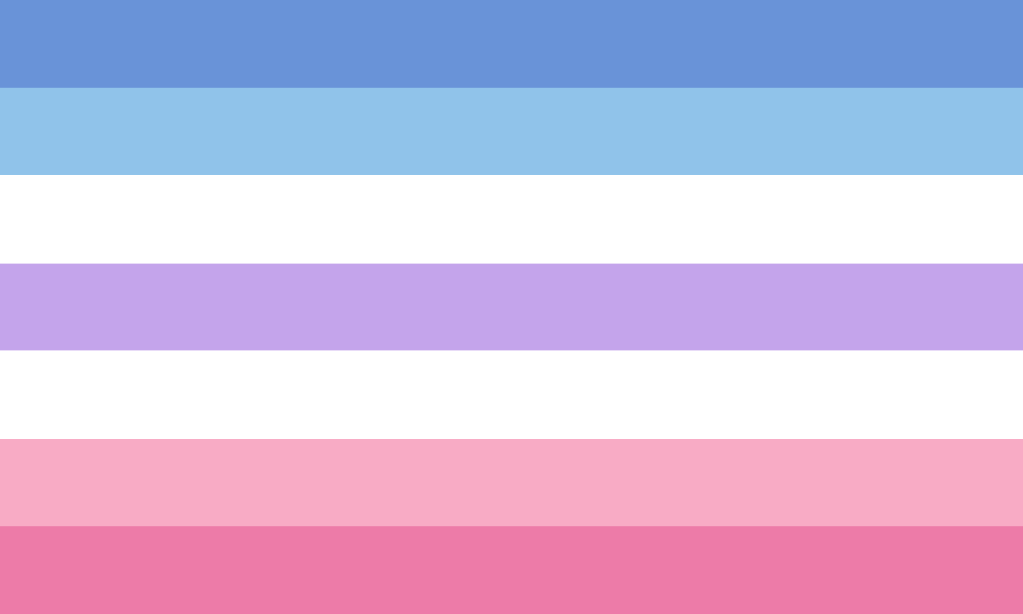


Leave a comment